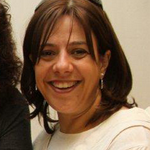What I have observed while giving workshops
As part of the Jewish Interactive team, I have been privileged to be involved with 7 different schools throughout South Africa.
As a parent, and an occupational therapist, I feel I have a very unique opportunity to observe the elements of a school environment.
When I visit a school, I notice many things that contribute to the ‘feeling’ in the school.
School Environment
The environment in a school is often the first thing a visitor will see. A visitor sees whether the corridors are tidy, the displays on the wall, whether the children’s work is displayed. This is the first impression a visitor has of a school.
The school buildings at the Herzlia schools in Cape Town were quite impressive. From the beautiful patterns on the floor to the artwork and projects displayed all around the school. There is a sense of learning with every step you take.
Classroom Layout
Each classroom has a different teacher and each teacher is unique in her style and method of teaching and organisation of the classroom space.
In one class, I noticed that the children did not sit in the same seats for longer than 3 weeks. When I asked the teacher about this she replied, “When you go to a movie or theater, you are not always able to get the front row middle seat”. Her method gives the children an opportunity to experience the differing benefits and distractions that the different positions in the classroom offer. For example, there is a noise distraction on the left and a visual distraction on the right. In the front row you have a clear view of the blackboard and in the back and middle rows you have to position yourself appropriately to see the board.
In another classroom the desks were all placed in one section of the room, quite close to each other, and on the other side of the room there was a large open space. When I queried the teacher about her reasoning for the layout, she answered that she preferred having the children close to the board thus using the width of the room instead of the length.
There was a positive atmosphere in the classrooms where there up to date posters and artwork on the wall, whereas it was disappointing to find a lack of décor in others. The children often use the posters to incorporate into their creations, which is part of the process of blended learning.
The younger grades tend to have more of the children’s work as opposed to the older grades.
It was very impressive to see a teacher who was changing her posters as soon as one chag was over to the next chag. There was one classroom that had not changed their posters since Purim and I was doing a Shavuot workshop.
ICT provision
The different computer and media centres were very interesting to see. I saw suites where the computers are placed around the edge of the room against the wall and some where there were rows of desks with computer screens blocking the line of vision and the openness of the class. I found it much easier to teach in the rooms where the computers lined the walls as I was able to see all the children and keep an eye on what they were doing. This meant I could easily see if a child wanted support or needed guidance.
A few things I have noticed when visiting schools is the placement of cables to a screen to the projector.
In some schools the connection was under the teacher’s desk with no way to extend it. I was therefore unable to connect my iPad or I would have been sitting underneath the desk while trying to teach. The cables at another school are the right length but not always placed in the correct place in the class. They are often not next to the teacher’s desk, so the teacher has nowhere to rest her laptop. There are also some classes where the connection is on the side of the room and not where the image is being projected which makes it difficult for me to show the class on the iPad and point to the board at the same time.
At one school, I was very impressed. I walked into the computer lesson and the children were learning ICT skills through a project format. They were typing out their spelling words in a word document thereby achieving learning of spelling as well as typing skills (they were grade 2 and typing like professionals.) I think a good idea would be to get the children to have a project in their computer lab thereby learning the skills of the programme (word, excel, power point) through a direct goal and end product.
Learners
My favourite classes are the ones in which I teach my own children, they get so excited to have me as their teacher for the day and their friends love it too.
Moving from a profession that is based on one on one work to teaching between 12 and 22 children at a time can be quite daunting. I have noticed children, who are supposedly the weak ones, in the class thriving with the use of the iPad. There was a child with ADHD in one of my classes, I had been warned by the teacher about his behavior but could not pick him out in the class because he became so focused when working with the iPad.
The stronger, brighter kids often are the ones who struggle in this kind of environment. Many children struggle with the collaboration and find it quite difficult to manage conflict within their designated group.
The older grades definitely have an edge on the younger grades as they are more mature and understand instructions far quicker than their younger counterparts. The younger grades are very interested in the games whereas the older ones get involved in the actual content creation apps. Although all children benefit from the workshops, if I had to choose which classes to run this programme in, I would highly recommend the senior primary as opposed to the lower school.
Having said all this, I have noticed that within the year the children themselves mature a great deal. I saw this particularly in a Grade 3 class where in the first session at the beginning of the year there was a lot of conflict and insecurity, in the following session, four months later, they were clear on what they had to do and got on with the job at hand.
Teachers
The most fascinating part of visiting a classroom is observing how the teacher reacts to my presence. Again, each teacher is different.
Many teachers are very excited to have me in the classroom and often help out when a group has a problem. These teachers view my visit as an opportunity for them to learn something new and take something from my session to use when they continue teaching.
It is disappointing to find that some teachers think that, as there is a visiting teacher, they have a free period and take this opportunity to read a book, say tehillim, mark tests, plan their lessons, make a phone call or have a meeting outside the classroom.
Although I am there for the kodesh side of the school day I find that many of the general studies teachers are very keen to see what is happening so they come in at the end and are genuinely interested to see the children’s work.
I believe this is an area that needs to be worked on as the teachers have so much to learn from being present and involved in the workshop.
When I conclude the workshops, I need a way to send the digital material that the children have completed home. As I personally cannot have the entire emailing list of the school, this is done through the teachers. Many teachers will forward the emails straight away to the parents and give me feedback on what the parents said or send the parents’ emails on to me. Others, however, take many days or weeks to send out the emails. I often get queries from pupils as well as from parents about when their email will arrive. As I have done my part of the process, I expect the teachers to do theirs. One teacher said she wanted to keep some of the digital creations to show the parents on a show day and that she didn’t send all of them out because it was too much work to look for all the emails.
At another school a teacher sent all her emails to the secretary of the school who was new and she didn’t know what to do with all these mails so she just deleted them.
This is unacceptable and unfair to the process as well as the pupils; these children excitedly wait from the time they do their project for the moment that their emails arrive.
In conclusion
I believe that if the children had a lesson or two on collaboration, conflict resolution and skills of group work, the pupils would gain a lot more out of the workshops.
I have thoroughly enjoyed embarking on this new, innovative and exciting path of teaching and I hope to learn many more skills and see this programme grow from strength to strength.
About the author






Leave a Comment